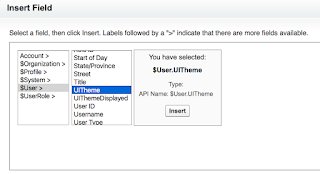I took the Salesforce Architect Certification Self Evaluation exam recently. This officially begins my journey towards the Certification.
So this post is effectively a beginning for a series of posts where I will keep sharing
Similar to all the salesforce certification exams, you can register for the self evaulation exam in Webassessor. The pre-requisite for the self evaluation is either the App builder or the Developer (believe this is the old one and not the new Platform Developer I). The only change for this exam compared to other exams is this exam is not a proctored one. So you can simply launch the exam online from your webassessor account after registering for it.
Type : online, non proctored
Questions : 42
Time : 30 minutes
For the initial set of questions, You have to rate yourself from a scale of
for the list of skills listed below. The only suggestion I have here is Please Be Honest with the skill assessment questions. I've given the scale I chose for each skill based on my experience.
OOPS Principles
So this post is effectively a beginning for a series of posts where I will keep sharing
- my progress (so that I can keep track of myself :-) ),
- any materials I find interesting & useful,
- possibly some tips on how to prepare for the exam
- outline the content of the certification exam
Similar to all the salesforce certification exams, you can register for the self evaulation exam in Webassessor. The pre-requisite for the self evaluation is either the App builder or the Developer (believe this is the old one and not the new Platform Developer I). The only change for this exam compared to other exams is this exam is not a proctored one. So you can simply launch the exam online from your webassessor account after registering for it.
Type : online, non proctored
Questions : 42
Time : 30 minutes
For the initial set of questions, You have to rate yourself from a scale of
- 0 - No Experience
- 1 - General Awareness
- 2 - Some Experience
- 3 - Extensive Experience
- 4 - Expert
Web Technologies
- CSS - 2
- AJAX - 3
- JS Libraries - 3
- JSON - 4
- FLEX - 2
- HTML - 3
- SOAP - 4
- REST - 3
- XML - 3
Licenses
- Chatter - 2
- Customer Portal - 3
- Partner Portal Platform - 3
- High Volume - 2
- Authenticated Sites - 2
- Non Authenticated Sites - 1
- Offline - 1
- Mobile - 2
- Content - 2
Identity Management
- Single Sign On - 2
- Delegated Authentication - 2
- SAML - 2
- OAuth - 3
- Identity Federation - 2
Security
- Public Key Infrastructure - 2
Design Pattern
- MVC - 4
- Factory - 3
- Delegation - 2
- Interface - 4
- Singleton - 3
OOPS Principles
A. Polymorphism
B. Inheritance
C. Encapsulation
D. Late vs Early Binding
E. Abstraction
Integration Approaches
A. Apex Web Services Callouts
B. Apex Web Services Callins
C. Outbound Messaging
D. Email to Apex
E. Mashup
Deployment
A. Change sets
B. ANT Deployment
C. Force.com IDE
D. Managed or Unmanaged Packages
E. Third-party or in-house
Source Control
A. Subversion
B. Git
C. Mercurial
D. Visual Sourcesafe
E. CVS
Project Methodologies
A. Agile
B. Waterfall
C. Other
some of these question might be repeated so you can select your experience between General Awareness, Some Experience, Extensive Experience for each of the options under the topics
Finally, you have to give your number of Years in Architect role and Years with Salesforce Platform and provide couple of References from any of your projects where you played an architect role.
I'm working thru my Platform Developer II certification exam currently (the first part - multiple choice exam is scheduled in couple of weeks time and hopefully I can complete the programming assignment in the next couple of months based on the exam calendar).
I'm working thru my Platform Developer II certification exam currently (the first part - multiple choice exam is scheduled in couple of weeks time and hopefully I can complete the programming assignment in the next couple of months based on the exam calendar).








